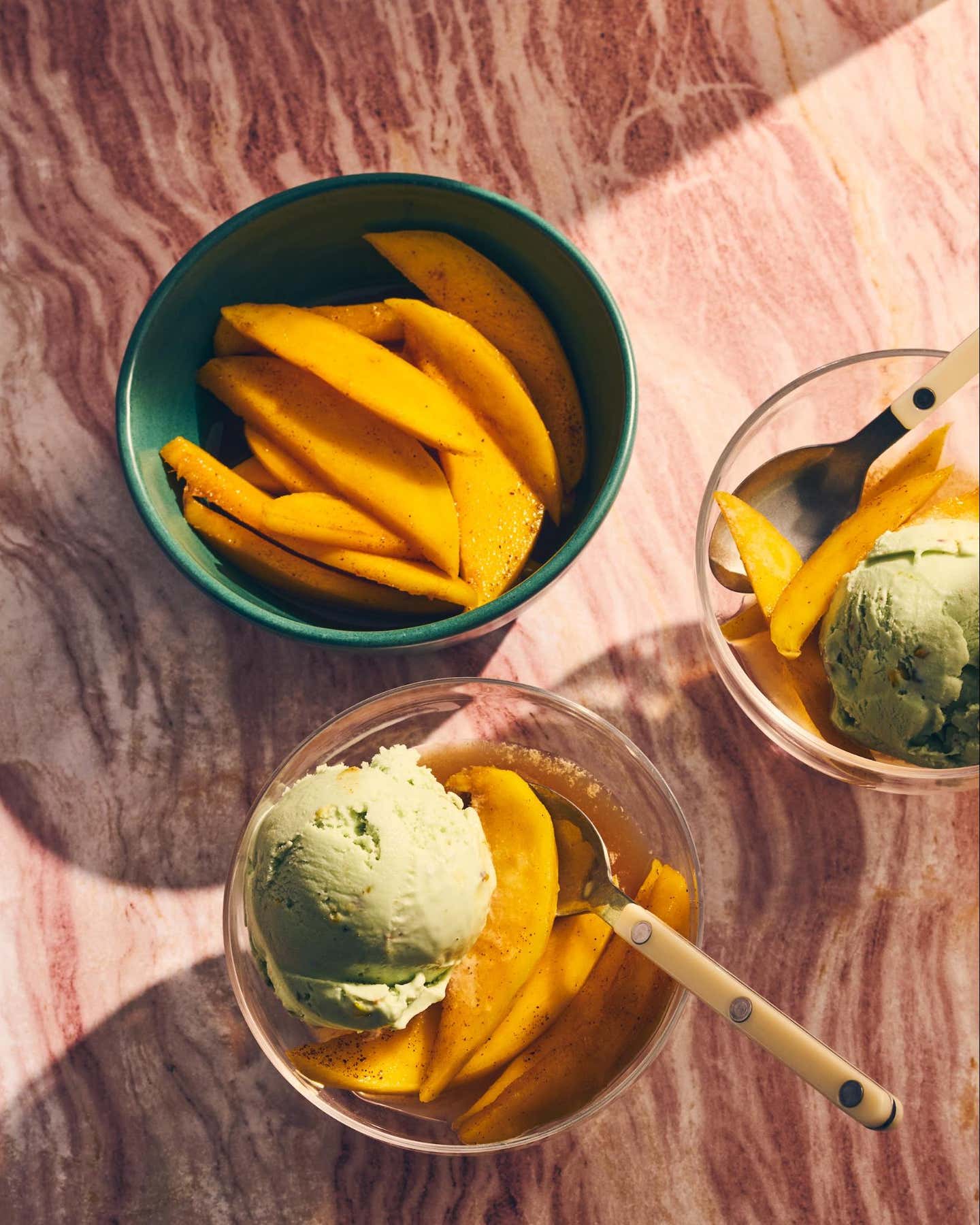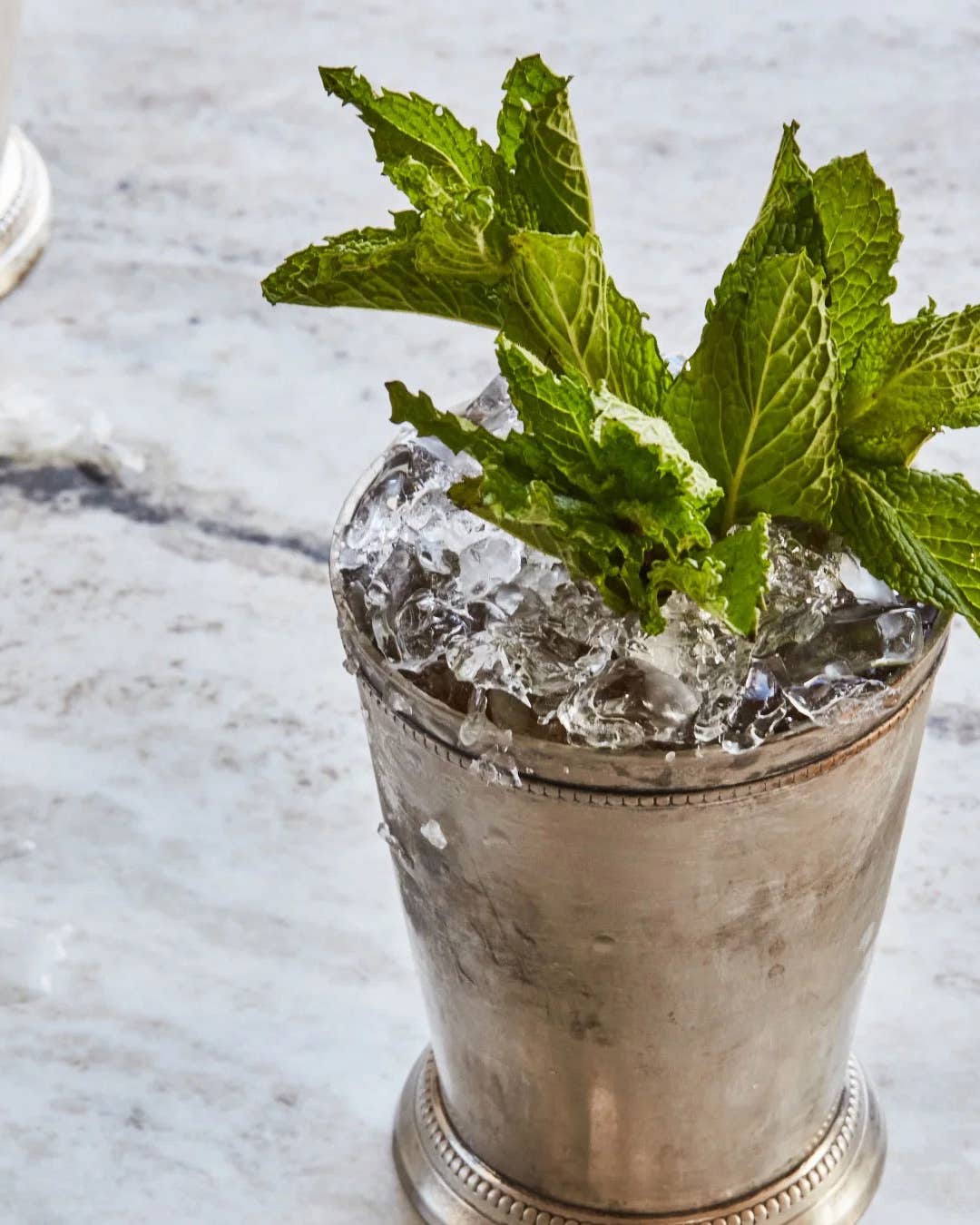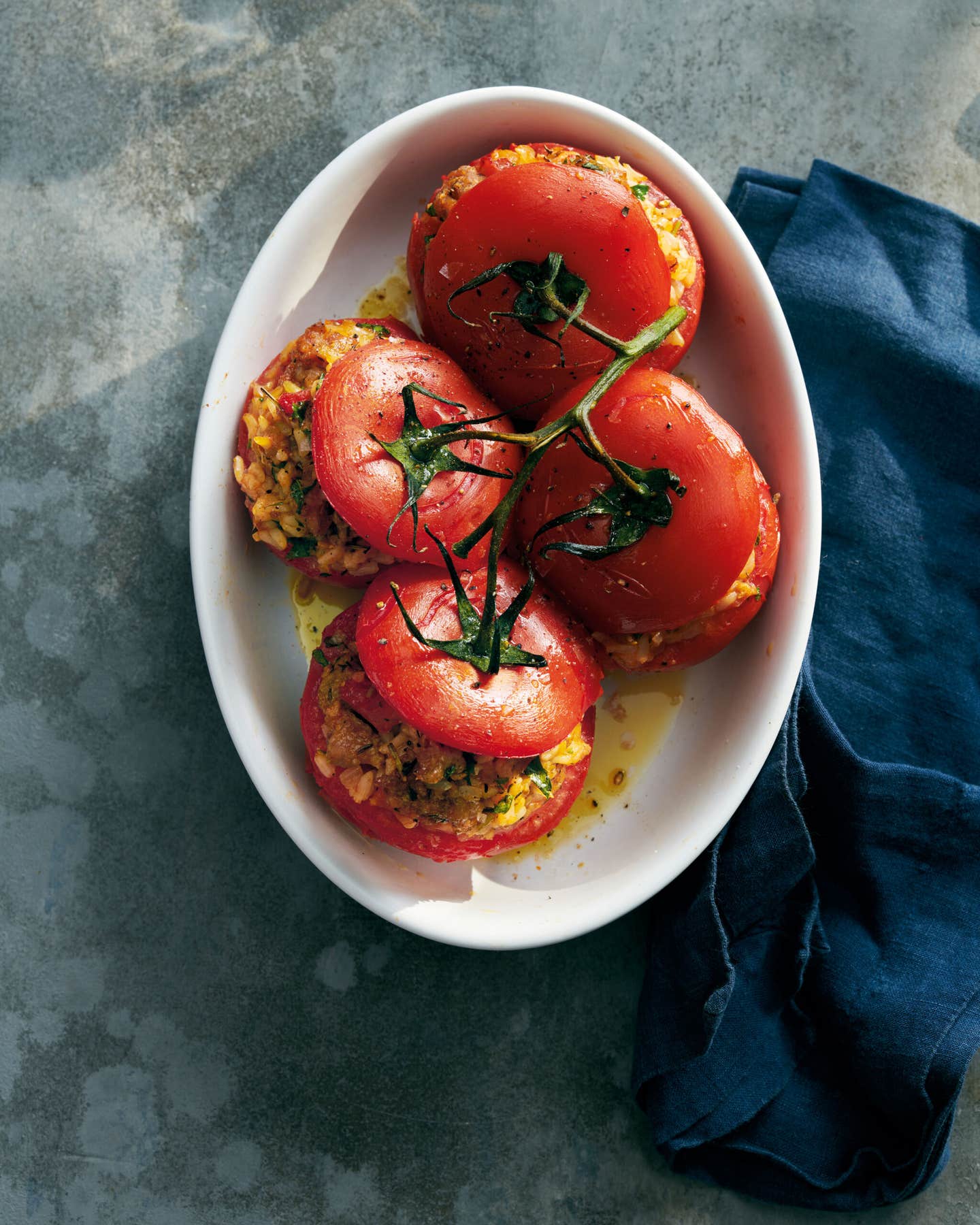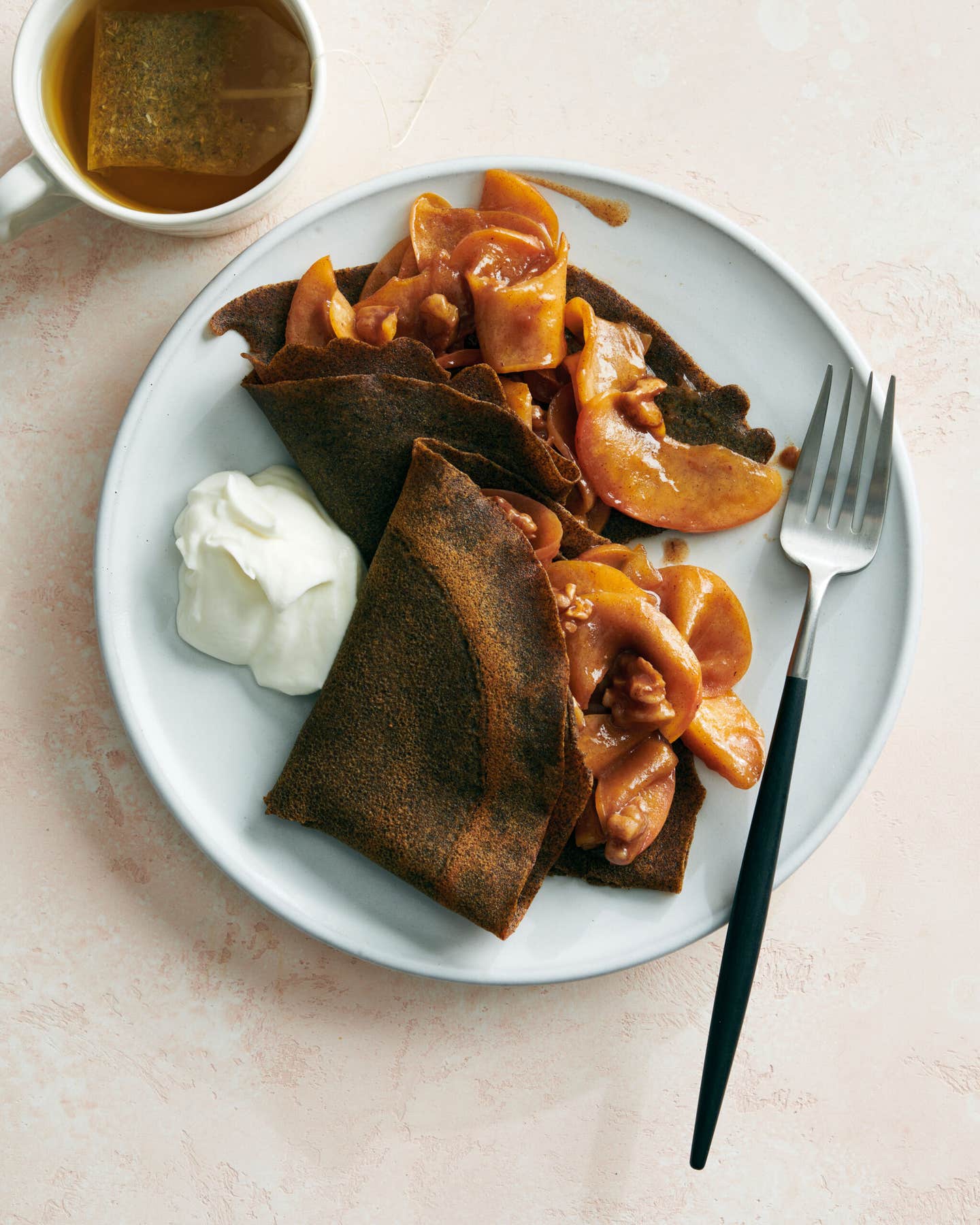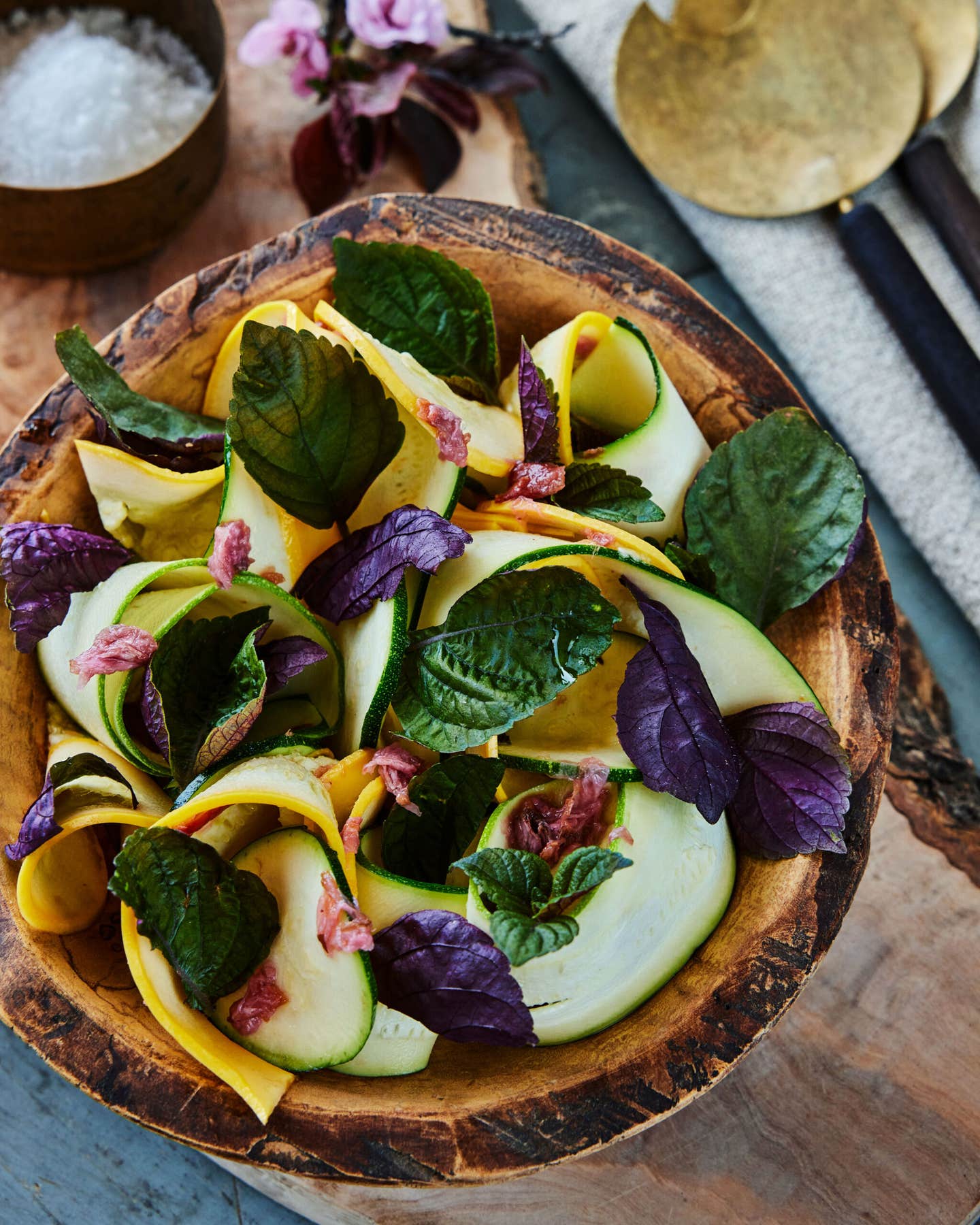Chocolate and Honey Swirl Cake
The humble Rosh Hashana dessert gets a supersized, deliciously gooey makeover.
- Serves
16
- Time
2 hours 30 minutes
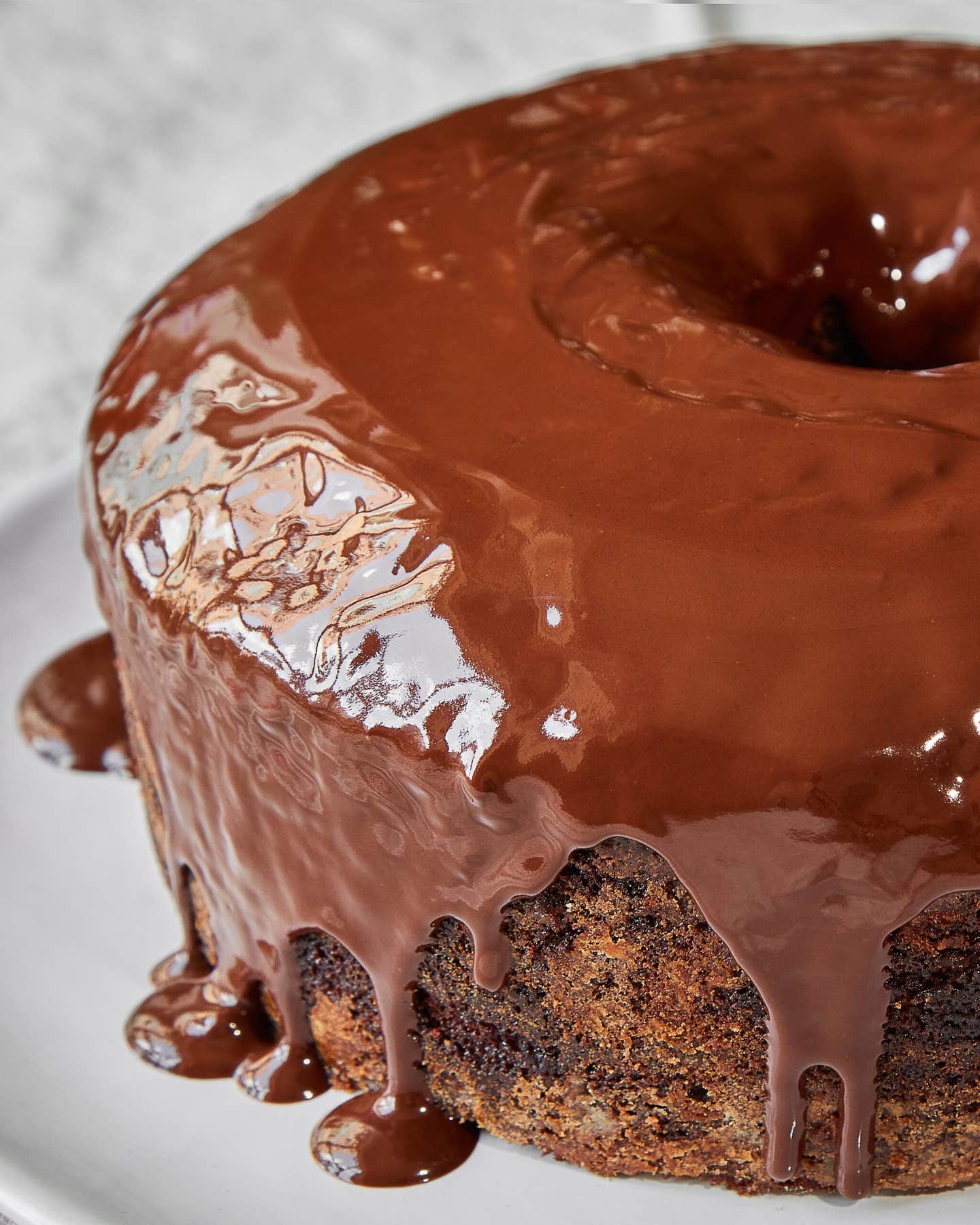
On the red carpet of Rosh Hashana desserts, honey cake has a far smaller fan base than some of its glittering apple counterparts. Yet honey cakes are iconic, tethered to the High Holidays as a symbol of hope for a sweet New Year and a nod to Israel, “a land flowing with milk and honey” (Book of Exodus 3:8). The Jewish New Year is a time of introspection and celebration, and an opportunity to reflect on the previous year and consider the one forthcoming. It’s why Jewish bakers also gravitate towards circular baked goods for this season, symbolizing life’s continuous cycle.
Honey-laced cakes have long been embraced by cultures around the world. As far back as the 12th century, Italian bakers were known for a dense and honey-sweetened semolina cake; in the 13th and 14th centuries, heavily spiced and honeyed gingerbread, studded with nuts and dried and candied fruit, was prevalent throughout Europe. Eventually, the Ashkenazi Jews in Central Europe embraced their own version, which they enjoyed alongside strong coffee or tea.
Honey cake—also known as “lekach” a Yiddush word derived from the German lecken, meaning “lick” and perhaps the Aramaic lĕkhakh, meaning to “mix in thoroughly”—is often maligned. Much like fruitcake, an overpowering spice profile and stodgy texture are at the heart of the dish’s bad reputation. Even honey cake devotees admit that the dessert is more often about family tradition than flavor, tethering us to generations that once circled the holiday table. In revisiting the tradition, I turned to a cake culled from Bayswater, Queens circa 1950, when recipe swapping was popular within the Temple Sisterhood and the American Jewish volunteer women’s organization, Hadassah. My grandmother, Minnie, was a dedicated member of both.
Minnie’s Rosh Hashana cake is a happy marriage between golden honey cake and rich chocolate cake. It is, as my grandmother would say, “a good keeper,” in part due to the high concentration of honey, which works as a preservative. Her recipe also includes a generous splash of Coca-Cola which, having been deemed kosher in 1936, has found its way into many subsequent Jewish recipes. Because we were a family of Dr. Brown’s cream soda fans, I’ve swapped that in (it’s also kosher) for the original cola. And though Minnie’s version was unglazed, I’ve also added a slick of dark chocolate-honey icing, which I find elevates this humble cake to superstar status.
Ingredients
For the honey cake layer:
- 1¾ cups all-purpose flour
- 1½ tsp. baking powder
- 1½ tsp. ground cinnamon
- 1½ tsp. freshly grated nutmeg
- 1 tsp. ground cardamom
- 1 tsp. finely grated orange zest
- ½ tsp. baking soda
- ¼ tsp. ground allspice
- ¼ tsp. ground ginger
- ¼ tsp. kosher salt
- ½ cup clover honey
- ½ cup dark brown sugar
- ½ cup neutral oil, plus more for greasing
- ½ cup sugar
- 2 large eggs, at room temperature
- ½ cup strongly brewed coffee or tea, at room temperature
- ¼ cup whiskey or orange juice
- 1 tsp. vanilla extract
For the chocolate layer:
- 1 cup all-purpose flour
- ½ cup medium rye flour
- ⅓ cup dark cocoa powder, sifted
- 1½ tsp. baking powder
- ½ tsp. baking soda
- ¼ tsp. kosher salt
- 1 cup sugar
- ½ cup dark brown sugar
- ½ cup neutral oil
- 2 large eggs, room temperature
- 1 tsp. vanilla extract
- 1 cup cream soda (preferably Dr. Brown’s brand)
For the glaze:
- 8 oz. dark chocolate, finely chopped (preferably 60%)
- 2 Tbsp. coconut oil
- 1 Tbsp. clover honey
Instructions
Step 1
Step 2
Step 3
Step 4
Step 5
- Preheat the oven (with one of the racks positioned in the bottom third) to 350°F. Lightly grease an angel food cake pan with neutral oil. Line the bottom of the pan with a circle of parchment paper, lightly grease the paper, then dust the pan very lightly with all-purpose flour, knocking out any excess.
- Make the honey cake layer: In the bowl of a stand mixer fitted with the whisk attachment, stir together the flour, baking powder, cinnamon, nutmeg, cardamom, orange zest, baking soda, allspice, ginger, and salt. In a medium bowl, whisk together the honey, dark brown sugar, oil, sugar, eggs, coffee, whiskey, and vanilla. Turn the mixer on low and gradually pour in the wet mixture, occasionally pausing to use a silicone spatula to scrape down the bottom and sides of the bowl, until the batter is smooth. Pour evenly into the prepared cake pan and set aside.
- Make the chocolate cake layer: Clean and dry the stand mixer bowl and whisk and return to the mixer. To the bowl, add the flour, rye flour, cocoa powder, baking powder, baking soda, and salt. In the medium bowl, whisk together the sugar, brown sugar, oil, eggs, vanilla, and cream soda. Turn the mixer on low and gradually pour in the wet mixture, occasionally pausing to use a silicone spatula to scrape down the bottom and sides of the bowl, until the batter is smooth. Slowly and evenly pour the chocolate batter over the honey batter. Using an offset spatula or the back of a spoon, smooth the surface of the cake, but do not swirl the two layers together. Place the cake pan on a large baking sheet, transfer to the oven, and bake until a cake tester inserted in the center of the cake comes out clean, 60–75 minutes. Transfer the cake to a wire rack and set aside to cool in its pan for 30 minutes.
- Meanwhile, make the glaze: To a heatproof bowl set over a small pot of simmering water, add the chocolate, coconut oil, and honey; cook, stirring frequently, until the chocolate is nearly melted, about 5 minutes. Remove from the heat and set aside, stirring occasionally, until the glaze is completely smooth. Set aside.
- Using an offset spatula or a thin knife, loosen the cake from the sides of the pan. Invert onto a plate to remove from the pan, discard the parchment paper circle. Set aside to cool completely before inverting the cake once again onto a large serving plate. Pour the glaze evenly over the top of the cooled cake, allowing the excess to drip down the sides. Cut into slices and serve at room temperature. Covered loosely with plastic wrap, the cake will keep well at room temperature for 4 days, or longer if refrigerated.
Keep Reading
Continue to Next Story
